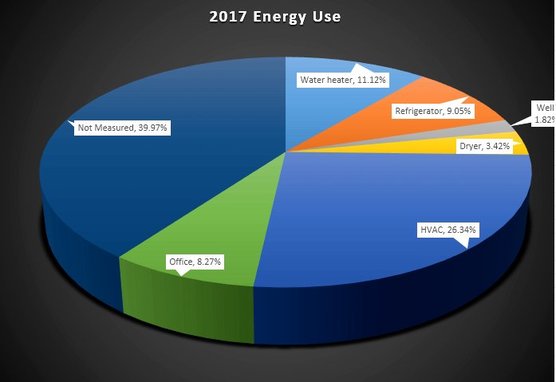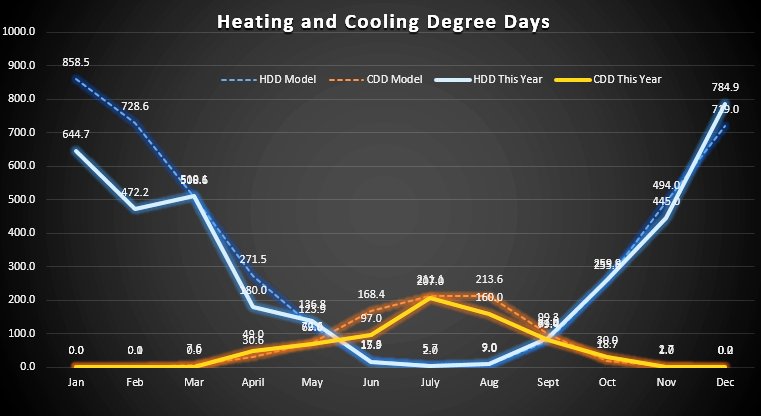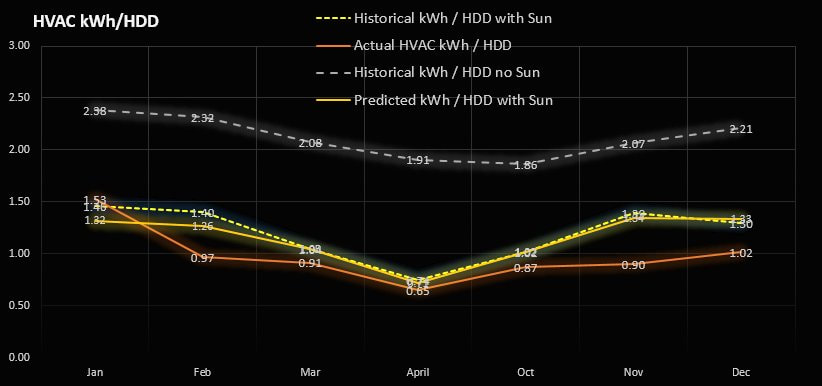Of this, $1476.21 (approximately 10 cents per kWh, as expected) was for energy and the remaining $240.00 was for connection/metering fees.
The following pie chart shows the overall energy use.
We used a total of 3882 kWh for HVAC, which is approximately $382.00. We did not run any AC but we did consume about 430 kWh dehumidifying the lower level. Overall, we used a lower percentage of energy on HVAC but a much higher percentage of "not measured" than 2016.
The following chart shows that January through April were warmer than historical average while October through December were close to average.
The next chart shows the energy consumed for heating. As in previous reports, the dashed grey line shows the theoretical energy used per Heating Degree Day (HDD) with no sun (i.e. a non-solar house). The dashed yellow line shows the theoretical energy use taking passive solar gain into account. In general we expect to receive about 30% of our heating load from the sun.
December is particularly important. This is the first month where I started an experiment to use the wood stove whenever the temperature dropped below 30 degrees. Although this past December was 10% colder than average, the house performed about 30% better than the model.
I can't jump to conclusions since there are other variables that can affect the performance (number of sunny days, more windy vs less windy). However, the results look promising and I will continue the experiment through January.
In the January report I'll review the results over the two month period and provide a further discussion on the economics of wood heat.






 RSS Feed
RSS Feed